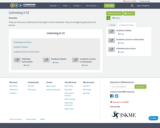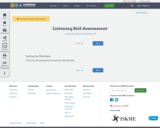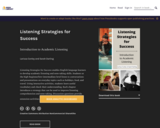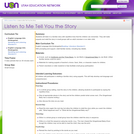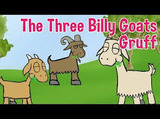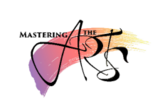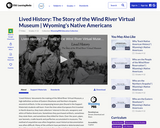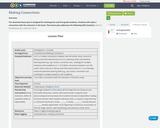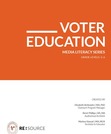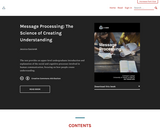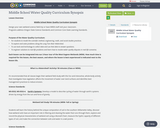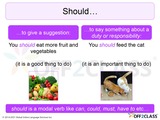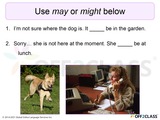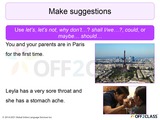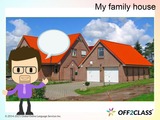Middle School Water Quality Curriculum SynopsisDesign your own wetland science field trip or have WREN staff visit your classroom.Programs address Oregon State Science Standards and Common Core State Learning Standards. Purpose of the Water Quality Curriculum: • For students to model the scientific method, engineering, math, and social studies practices. • To explore and solve problems along the Long Tom River Watershed. • To use tools and technology to collect data and use that data to answer questions.• To engineer solutions to real-life problems and learn how to resolve water quality disputes in real-life scenarios. Each lesson can be integrated into our 2-hour tour of the West Eugene Wetlands (WEW). How much time is required for the lesson, the best season, and where the lesson is best experienced is indicated next to the lesson tile._______________________________________________________________________________________________What is a Watershed? Activity/ 50 minutes (Class or WEW):It’s recommended that all classes begin their wetland field study with this fun and interactive, whole-body activity that investigates how vegetation affects the movement of water over land surfaces and identifies best management practices to reduce erosion. Science Standards: MS-ESS2; MS-ESS2-4. Earth’s Systems: Develop a model to describe cycling of water through earth’s systems driven by energy from the sun and force of gravity._______________________________________________________________________________________________Wetland Soil Study/ 90 minutes (WEW- Fall or Spring):Students will learn the history behind the unique composition of soil in the southern Willamette Valley, discover how wetland soils have an important role in filtering and cleaning the water that runs through them, explore and record the physical characteristics of wetland soil using a Munsell Chart, measure the hydric capacity of different types of soil, and make the connection between soils and water in a wet prairie. Science Standards: MS-ESS2-2. Earth’s Systems: Construct an explanation based on evidence for how geoscience processes have changed Earth's surface at varying time and spatial scales.Common Core Standards:Mathematics7.EE.B.4. Use variables to represent quantities in a real-world of mathematical problem, and construct simple equations and inequalities to solve problems by reasoning about quantities.______________________________________________________________________________________________ Water Quality of Amazon Creek/ 90 minutes (WEW- Fall and Spring):Through experimentation and a simulation, students will learn how increases in water acidity have endangered the quality of life for water-based organisms in parts of Eugene. Students will model water molecules under different circumstances, test water samples from Amazon creek for dissolved oxygen, PH, and temperature and learn how these variables impact the quality of life in our waterways. Science Standards: MS-PS1-1. Matter and Its Interactions: Develop models to describe the atomic composition of simple molecules and extended structures.Common Core Standards:Mathematics 6.SP.B.4. Display numerical data in plots on a number line, including dot plots, histograms, and box plots.7.EE.3. Solve multiple real-life & mathematical problems posed with positive and negative rational numbers in any form using tools strategically. Apply properties of operations to calculate with numbers in any form. _______________________________________________________________________________________________Flood-Plan Engineering Design/ 90 minutes (WEW or Class- Fall, Winter, Spring):Students will learn about historic floods in the Willamette Valley, and explore flood dynamics by building models of riverbeds and testing their holding capacity. Students will use engineering to design systems that will help prevent flood damage and learn about how human modifications to a river or wetland can alter the floodplain.Science Standards:MS-ESS3-3. Earth’s & Human Activity: Apply Scientific principles to design a method for monitoring and minimizing a human impact on the environment.MS-ESS3-2. Earth’s & Human Activity: Analyze and interpret data on natural hazards to forecast future catastrophic events and inform the development of technologies to mitigate their efforts.MS-ETS1-1; 1-4. Engineering Design: Develop a model to generate data for iterative testing and modification of a proposed object, tool, or process such that an optimal design can be achieved. Common Core Standards:MathematicsMP.2. Reason abstractly and quantitatively._______________________________________________________________________________________________Water Quality Debate/ 60 minutes (Class- Fall, Winter, Spring):Students will demonstrate how disputes regarding water quality and quantity can be settled through mediation by playing character roles in a mock Town Hall Meeting. They will develop and engage in an evidence supporting argument surrounding a local water-related issue, evaluate arguments presented by others of different viewpoints, and decide on a resolution.Science Standards:MS-LS2-5. Ecosystems: Interactions, Energy and Dynamics: Evaluate competing design solutions for maintaining biodiversity and ecosystem servicesCommon Core Standards:ELA/LiteracyMS-LS-2-2. Engage effectively in a range of collaborative discussions (one on one, in groups, and teacher led) with diverse partners on grade 8 topics, texts, and issues, building on other’s ideas and expressing their own clearly. MS-LS2-2. Present claims or findings, emphasizing salient points in a focused coherent manner with relevant evidence, sound valid reasoning and adequate well-chosen details, use appropriate eye contact, adequate volume, and other pronunciation.
